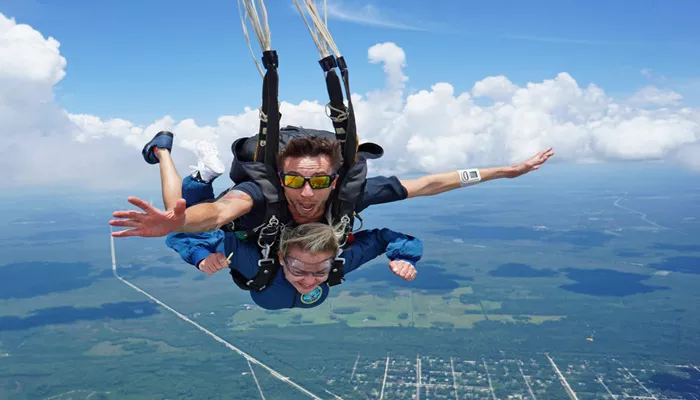Skydiving is an exhilarating extreme sport where you jump from an aircraft and freefall through the sky before deploying a parachute to land safely. One of the most common questions for beginners and enthusiasts alike is: how fast do you actually fall when skydiving? This article explains the physics behind skydiving speeds, focusing on how many feet per second you fall, what terminal velocity means, and how body position and equipment affect your speed.
Understanding Freefall Speed in Skydiving
When you jump out of a plane, you start accelerating toward the ground due to gravity. However, you don’t keep accelerating indefinitely. Air resistance pushes against your body, and eventually, you reach a balance point called terminal velocity. At this point, you fall at a constant speed without speeding up anymore.
How Many Feet Per Second Do You Fall?
On average, a skydiver in the typical belly-to-earth position falls at about 200 feet per second during freefall. To put that in perspective, this is roughly equivalent to 120 miles per hour (mph). This speed is not reached instantly; it usually takes about 10 to 12 seconds after exiting the aircraft to reach terminal velocity.
What Is Terminal Velocity?
Terminal velocity is the fastest speed you can reach during freefall. It happens when the downward force of gravity equals the upward force of air resistance, so your acceleration stops. Before terminal velocity, you accelerate from zero downward speed to this maximum speed.
After reaching terminal velocity, you continue falling at a steady speed until you deploy your parachute.
Factors Affecting Falling Speed
Several factors influence how fast you fall:
Body Position: The shape you make affects air resistance. Falling belly-to-earth creates more drag, slowing you down to about 120 mph (200 feet per second). Head-down or streamlined positions reduce drag, increasing speeds to 150-180 mph or even faster for expert skydivers.
Weight and Mass: Heavier skydivers fall faster because gravity pulls more strongly on them, but air resistance also increases. Tandem skydivers, who jump attached to an instructor, fall around 120 mph thanks to a small parachute called a drogue that slows them down.
Altitude and Air Density: At higher altitudes, air is thinner, so there is less resistance, allowing for slightly higher speeds.
Most jumps occur between 8,000 and 18,000 feet, with 10,000 feet being a common exit altitude.
Clothing and Equipment: Specialized suits and helmets can reduce drag, allowing for faster speeds, especially in competitive speed skydiving.
How Long Does It Take to Fall Certain Distances?
Knowing your fall rate in feet per second helps estimate freefall times:
After reaching terminal velocity, you fall about 1,000 feet in 5 seconds.
The first 1,000 feet take longer (around 10 seconds) because you are still accelerating.
A typical skydive from 15,000 feet gives about one minute of freefall time before deploying the parachute.
These times vary depending on the jump altitude and body position.
Speed Variations in Different Skydiving Styles
| Style | Approximate Speed (mph) | Approximate Speed (feet/second) | Notes |
| Belly-to-earth (typical) | 110-130 mph | ~160-190 ft/s | Most common position for stability and control |
| Tandem (with drogue) | ~120 mph | ~176 ft/s | Drogue chute slows fall for safety |
| Head-down (streamlined) | 150-180 mph | ~220-264 ft/s | Reduced drag, much faster fall |
| Speed skydiving record | 373.6 mph | ~547 ft/s | Extreme competitive speeds |
| Felix Baumgartner’s jump | 843.6 mph | ~1237 ft/s | Highest freefall speed ever recorded |
Safety and Sensation of Speed
Although 120 mph sounds incredibly fast, skydivers report that once terminal velocity is reached, the sensation is more like floating on air rather than falling at high speed. The wind resistance balances gravity, creating a stable, controlled freefall.
When the parachute opens, the descent slows dramatically to about 10 mph, allowing for a safe landing.
Conclusion
In summary, the average skydiver falls at about 200 feet per second (120 mph) during freefall after reaching terminal velocity, which takes around 10-12 seconds to achieve. This speed depends on body position, weight, altitude, and equipment. Understanding these factors can help both beginners and experienced skydivers appreciate the physics behind the thrill of freefall.
Whether you are planning your first tandem jump or training for advanced maneuvers, knowing how fast you fall will enhance your skydiving experience and safety awareness. So next time you leap from the plane, remember: you’re falling at about 200 feet every second, floating on air at terminal velocity!

